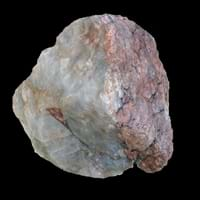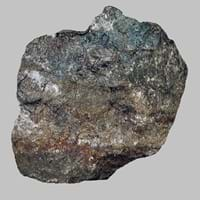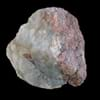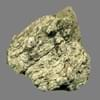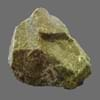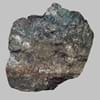Definition
Pegmatite rock is a holocrystalline, intrusive igneous rock which is composed of interlocking phaneritic crystals
Monzonite is a granular igneous rock with composition between syenite and diorite and containing approximately equal amounts of orthoclase and plagioclase
Origin
Unknown
Trento Province, Italy
Discoverer
R. J. Hauy
Unknown
Etymology
From Greek pegma, pegmat which means- thing joined together + -ite
From Mount Monzoni in the Tyrol, Italy, + -ite1
Class
Igneous Rocks
Igneous Rocks
Sub-Class
Durable Rock, Hard Rock
Durable Rock, Hard Rock
Other Categories
Coarse Grained Rock, Opaque Rock
Coarse Grained Rock, Fine Grained Rock, Medium Grained Rock, Opaque Rock
Texture
Pegmatitic
Phaneritic
Color
Black, Brown, Cream, Green, Grey, Pink, Red, Rust, Silver, White, Yellow
Black, Brown, Light to Dark Grey, White
Durability
Durable
Durable
Scratch Resistant
Yes
Yes
Appearance
Layered, Banded, Veined and Shiny
Shiny
Interior Uses
Decorative Aggregates, Flooring, Interior Decoration
Decorative Aggregates, Flooring, Interior Decoration
Exterior Uses
As Building Stone, As Facing Stone, Paving Stone
As Building Stone, As Facing Stone, Office Buildings, Paving Stone
Other Architectural Uses
Curbing
Curbing
Construction Industry
As Dimension Stone, Building houses or walls, Construction Aggregate, for Road Aggregate, Landscaping
As Dimension Stone, Cement Manufacture, Construction Aggregate, for Road Aggregate
Medical Industry
Not Yet Used
Not Yet Used
Antiquity Uses
Artifacts, Sculpture, Small Figurines
Artifacts, Monuments, Sculpture
Commercial Uses
Creating Artwork, Jewelry, Source of corundum, tourmalines, beryls and topaz
Creating Artwork
Types
Granite Pegmatite, Gabbro Pegmatite and Diorite Pegmatite
Quartz Monzonite, Mangerite, Syenite and Diorite
Features
Generally rough to touch, Is one of the oldest rock, Source of corundum, tourmalines, beryls and topaz
Available in lots of colors, Is one of the oldest rock
Archaeological Significance
Monuments
Not Yet Used
Used
Famous Monuments
Not Applicable
Data Not Available
Famous Sculptures
Data Not Available
Data Not Available
Pictographs
Not Used
Not Used
Petroglyphs
Not Used
Not Used
Formation
Pegmatite rock is holocrystalline, intrusive igneous rock which is formed by partial melting and dewatering during the process of metamorphism.
Monzonite is a fine-grained, hard rock which is a type of metasomatite, essentially altered basalt. It forms with or without crystallization, either below the surface as intrusive rocks or on the surface as extrusive rocks.
Mineral Content
Apatite, Beryl, Feldspar, Fluorite, Garnet, Lepidolite, Quartz, Silica, Spodumene, Topaz
Albite, Amphibole, Apatite, Biotite, Feldspar, Hornblade, Ilmenite, Magnetite, Muscovite or Illite, Olivine, Plagioclase, Pyroxene, Quartz, Sulfides, Titanite, Zircon
Compound Content
Aluminium Oxide, CaO, Iron(III) Oxide, FeO, Potassium Oxide, Magnesium Carbonate, MgO, Phosphorus Pentoxide
Aluminium Oxide, CaO, Iron(III) Oxide, FeO, Potassium Oxide, MgO, MnO, Sodium Oxide, Phosphorus Pentoxide, Silicon Dioxide, Titanium Dioxide
Types of Metamorphism
Burial Metamorphism, Cataclastic Metamorphism, Contact Metamorphism, Hydrothermal Metamorphism, Impact Metamorphism, Regional Metamorphism
Burial Metamorphism, Cataclastic Metamorphism, Impact Metamorphism
Types of Weathering
Biological Weathering, Chemical Weathering, Mechanical Weathering
Biological Weathering
Types of Erosion
Chemical Erosion, Coastal Erosion, Glacier Erosion, Sea Erosion, Water Erosion, Wind Erosion
Chemical Erosion, Coastal Erosion, Glacier Erosion, Water Erosion
Grain Size
Medium to Coarse Grained
Medium to Fine Coarse Grained
Fracture
Conchoidal
Not Available
Porosity
Less Porous
Less Porous
Luster
Grainy, Pearly and Vitreous
Subvitreous to Dull
Cleavage
Perfect
Not Available
Toughness
2.1
Not Available
Specific Gravity
2.6-2.63
2.8-3
Transparency
Translucent to Opaque
Opaque
Density
2.6-2.65 g/cm3
2.9-2.91 g/cm3
Specific Heat Capacity
Not Available
Resistance
Heat Resistant, Impact Resistant, Pressure Resistant
Heat Resistant, Impact Resistant, Pressure Resistant
Deposits in Eastern Continents
Asia
China, India, Iran, Japan, Nepal, North Korea, Russia, Saudi Arabia, South Korea
China, India, Iran, Saudi Arabia, Sri Lanka, Taiwan, Thailand, Turkey, Vietnam
Africa
South Africa
Angola, Egypt, Ethiopia, Madagascar, Namibia, Nigeria, South Africa
Europe
Austria, France, Greece, Ireland, Italy, Netherlands, Slovakia, Spain, Turkey, Ukraine
Bulgaria, England, Germany, Norway, Romania, Switzerland
Others
Not Yet Found
Not Yet Found
Deposits in Western Continents
South America
Brazil
Argentina, Bolivia, Brazil, Chile, Colombia, Ecuador, Peru
Deposits in Oceania Continent
Australia
New South Wales, Queensland, South Australia, Western Australia
New South Wales, New Zealand, Queensland, South Australia, Western Australia
Pegmatite vs Monzonite Characteristics
Though some rocks look identical, they have certain characteristics which distinguish them from others. Characteristics of rocks include texture, appearance, color, fracture, streak, hardness etc. Pegmatite vs Monzonite characteristics assist us to distinguish and recognize rocks. Also you can check about Properties of Pegmatite and Properties of Monzonite. Learn more about Pegmatite vs Monzonite in the next section. The interior uses of Pegmatite include Decorative aggregates, Flooring and Interior decoration whereas the interior uses of Monzonite include Decorative aggregates, Flooring and Interior decoration. Due to some exceptional properties of Pegmatite and Monzonite, they have various applications in construction industry. The uses of Pegmatite in construction industry include As dimension stone, Building houses or walls, Construction aggregate, For road aggregate, Landscaping and that of Monzonite include As dimension stone, Cement manufacture, Construction aggregate, For road aggregate.
More about Pegmatite and Monzonite
Here you can know more about Pegmatite and Monzonite. The life cycle of a rock consists of formation of rock, composition of rock and transformation of rock. The composition of Pegmatite and Monzonite consists of mineral content and compound content. The mineral content of Pegmatite includes Apatite, Beryl, Feldspar, Fluorite, Garnet, Lepidolite, Quartz, Silica, Spodumene, Topaz and mineral content of Monzonite includes Albite, Amphibole, Apatite, Biotite, Feldspar, Hornblade, Ilmenite, Magnetite, Muscovite or Illite, Olivine, Plagioclase, Pyroxene, Quartz, Sulfides, Titanite, Zircon. You can also check out the list of all Igneous Rocks. When we have to compare Pegmatite vs Monzonite, the texture, color and appearance plays an important role in determining the type of rock. Pegmatite is available in black, brown, cream, green, grey, pink, red, rust, silver, white, yellow colors whereas, Monzonite is available in black, brown, light to dark grey, white colors. Appearance of Pegmatite is Layered, Banded, Veined and Shiny and that of Monzonite is Shiny. Properties of rock is another aspect for Pegmatite vs Monzonite. The hardness of Pegmatite is 7 and that of Monzonite is 6-7. The types of Pegmatite are Granite Pegmatite, Gabbro Pegmatite and Diorite Pegmatite whereas types of Monzonite are Quartz Monzonite, Mangerite, Syenite and Diorite. Streak of rock is the color of powder produced when it is dragged across an unweathered surface. The streak of Pegmatite and Monzonite is white. The specific heat capacity of Pegmatite is Not Available and that of Monzonite is 0.92 kJ/Kg K. Depending on the properties like hardness, toughness, specific heat capacity, porosity etc., rocks are resistant to heat, wear, impact, etc.Pegmatite is heat resistant, impact resistant, pressure resistant whereas Monzonite is heat resistant, impact resistant, pressure resistant.
